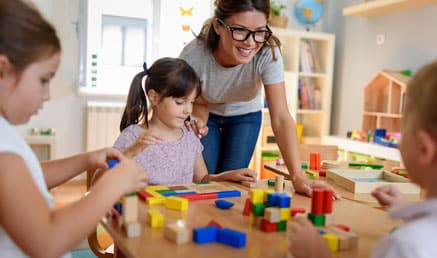
“It’s our polite nudge in the ribs to help you and your team stay organised and on task.”
This week’s subject is Child directed learning
Element 1.2.3: Each child’s agency is promoted, enabling them to make choices and decisions that influence events and their world.
Are educators responsive to children’s ideas and interests whilst using a range of intentional strategies to support and facilitate child directed learning?
A child directed approach to learning occurs when children lead and navigate their own learning through exploring, experimenting, investigating and being creative. Child directed learning promotes children’s agency and allows educators to respond to their needs and builds on their existing strengths and knowledge.
Educators use their knowledge of children’s interests, needs and abilities to set up the environment and provide resources that spark interest and inspire exploration. They foster child-directed learning by empowering children to make decisions about, plan for and be involved in the set-up of their own play experiences and projects.
When children have opportunities to make choices, to attempt tasks, to make decisions for themselves, and to take on increasing responsibilities, they can recognise their influence and significance in the world and develop skills in assessing risk. Guide to NQF
Strategies for facilitating child directed learning:
-
- Set up the environment with children’s individual interests in mind. Include a variety of materials and resources that spark interest, are open ended and stimulating.
- Provide a range of age-appropriate, open-ended resources within the indoor and outdoor play spaces
- Allow opportunities for exploration of the natural environment.
- Use your knowledge of children’s interests to create situations and experiences that inspire children’s play, exploration, and learning.
- Respond to children’s ideas and suggestions and provide them with the space and resources to extend on their play and learning through follow up experiences or long-term projects.
- Provide extended periods of uninterrupted time and space for child initiated and child directed play.
- Support, stimulate and scaffold children’s emerging skills.
- Identify and respond to children’s individual needs and provide additional support where required.
- Include children’s input when program planning and evaluating experiences.
- Educators are intentional and identify opportunities to scaffold learning using open-ended questioning to extend discussions and challenge children’s thinking.
Resources:
Supporting Agency: Involving Children in Decision-Making
Children’s sense of agency fostered through self-directed play, inspiring rich learning
The teacher’s role in supporting child directed play
Within System7 go to Quality Area 1/Module 6 to submit self-assessment notes and if required, open a QIP issue if you identify any areas of improvement.
The Childcare Centre Desktop has a range of resources to assist services with educational program and practice and child directed learning. These include Educational Program Policy, Assessment and Planning Cycle Guide and Procedure, All About Me- Child Introduction Form, Critical Reflection Template, Observation Record, Educational Program and Practice Procedure, Program Template and much more.
Resources, NQS Element, Regulation and System7 links:
Childcare Centre Desktop – Childcare Centre Desktop
National Quality Standard – QA 1/ 1.2.3- Child directed learning
National Regulations – 73, 74, 155, 156
System7 Module – QA 1/ Module 6
If you have any questions send us a note via the Contact page here!




